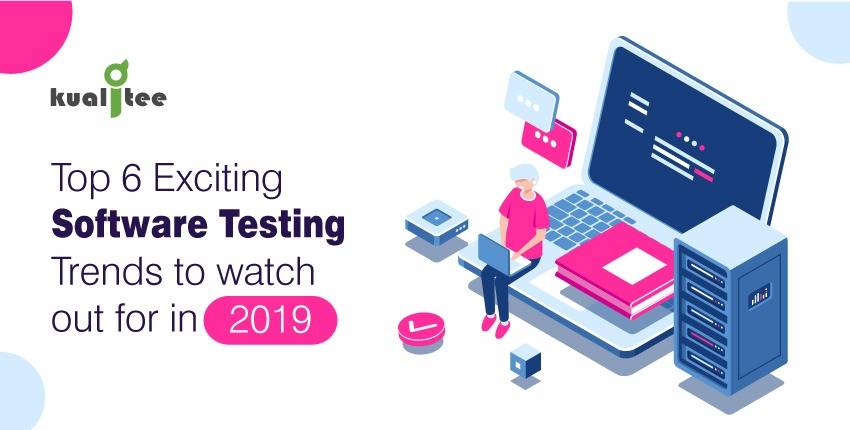With the dawn of 2019, the software development industry is undergoing radical changes and new trends are emerging in the software industry. Quality assurance professionals are rapidly adjusting to these radical changes and trends to keep up with the rapid pace of emerging trends and technologies. Many exciting software testing trends are making their way into the global market. Watch out for the following trends in 2019:
1. Quick Data Processing with Big Data
The biggest issue that arises while verifying big data testing is confirming that the data is successfully processed. Big data testing requires ample time to run the tests. Due to short delivery cycles, the challenge of delivering in short time frames must be addressed efficiently. Testers should check the quality of data even before the testing begins. There is an increase in demand for test platforms that can check different data layers in the operating system. Ideally, these platforms must be able to roll out new data while the old data is processed out. 2019 will see a major focus on big data testing with the help of such platforms.
2. Open Source Tools for Test Automation
Companies are already opting for open source services for test case management and automation. This means that the next era will bring further expansion of the latest automation tools in the market. New automation tools will replace the existing ones, especially in regression testing, that revolves around constant repetition. Open source tools deliver good results combined with speed and efficiency that are important for testing and delivery. Testers do not have to manually explore cases in the production environment, which leads to a good understanding of the software. However, for more efficient and effective results companies still opt for licensed tools. The understanding of the quality and the software itself is very high using licensed tools.
3. Continuous Testing with DevOps
Testing begins at the initial stage of the development cycle in DevOps. After the testing phase, Continuous Integration (CI) and Continuous Delivery (CD) take place. DevOps allows testers to perform testing and monitoring simultaneously so that they can easily develop a fully functional application. This year will bring more advancements in DevOps and further reduce the gap between developers and testers. Furthermore, DevOps eliminates the idea of QA specialists working as a separate team. Instead, it enables developers to find the best testing solutions. This year DevOps will enable a more seamless verification of code changes, ensuring that the applications are reliable.
4. Billions of Internet of Things Devices (IoT)
According to research from Gartner, there will be 20.8 billion smart devices by 2020. Moreover, IoT devices will operate on their own unique software. We all know that there are more connected devices than ever before due to the advent of IoT. Testers will be able to combine different elements involved due to communication protocols and operating systems. They will also have to compromise on IoT testing areas like usability, connectivity, security, and performance.
5. Shift Towards Artificial Intelligence (AI) & Machine Learning (ML)
AI is widely deployed, and it is predicted that testing will no longer be restricted to a single outcome. Instead, testing will be about generating various results, leaving it at the choice of the testers to decide whether the conclusion is justified or not. By 2025, the AI market is expected to reach $190.6 billion, from $16.06 billion in 2017. At the same time, the market for machine learning is expected to grow $1.41 billion to $8.81 billion by 2022. There will be more testing solutions for repetitive tasks, but the interpretation will depend on the testers.
6. Rapid Testing with Agile
As a result of increasing requests, testers will have to run tests without very detailed requirements. Instead of waiting to get full clarity on the requirements, testers will have to develop scenarios to test the main points. To deal with this, testers will have to rely on agile methodology.
In 2019, testers will have to respond effectively to rapid changes in the agile environment. They will have tight deadlines to deliver applications. Moreover, they will also have to entertain change requests that are too common in agile, especially during the final stages of the sprint. Testers will have to be transparent and ensure that they have properly tested all parts of the application. This is where the developers get to decide whether a feature needs to be released or not.
2019 will definitely revolutionize software testing. With that said, disruption and innovation will continue to give birth to new trends long after 2019 that testers and developers will have to adjust to deliver better customer experiences.


























